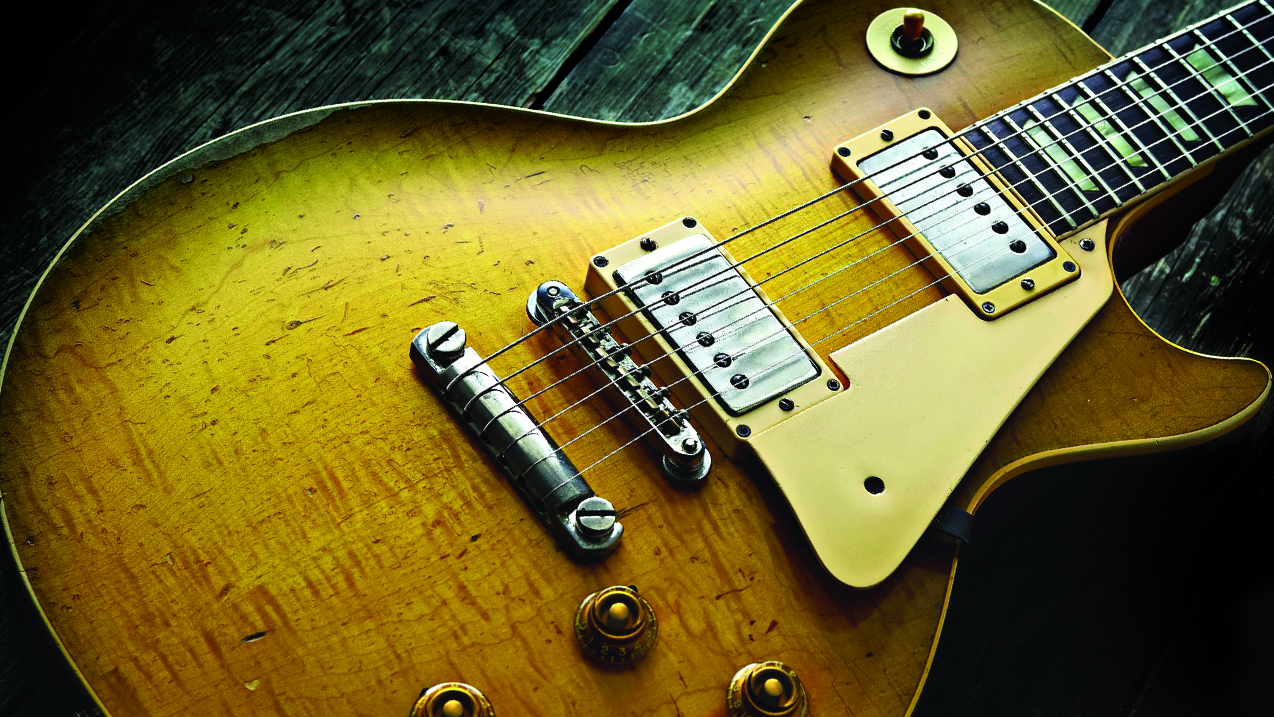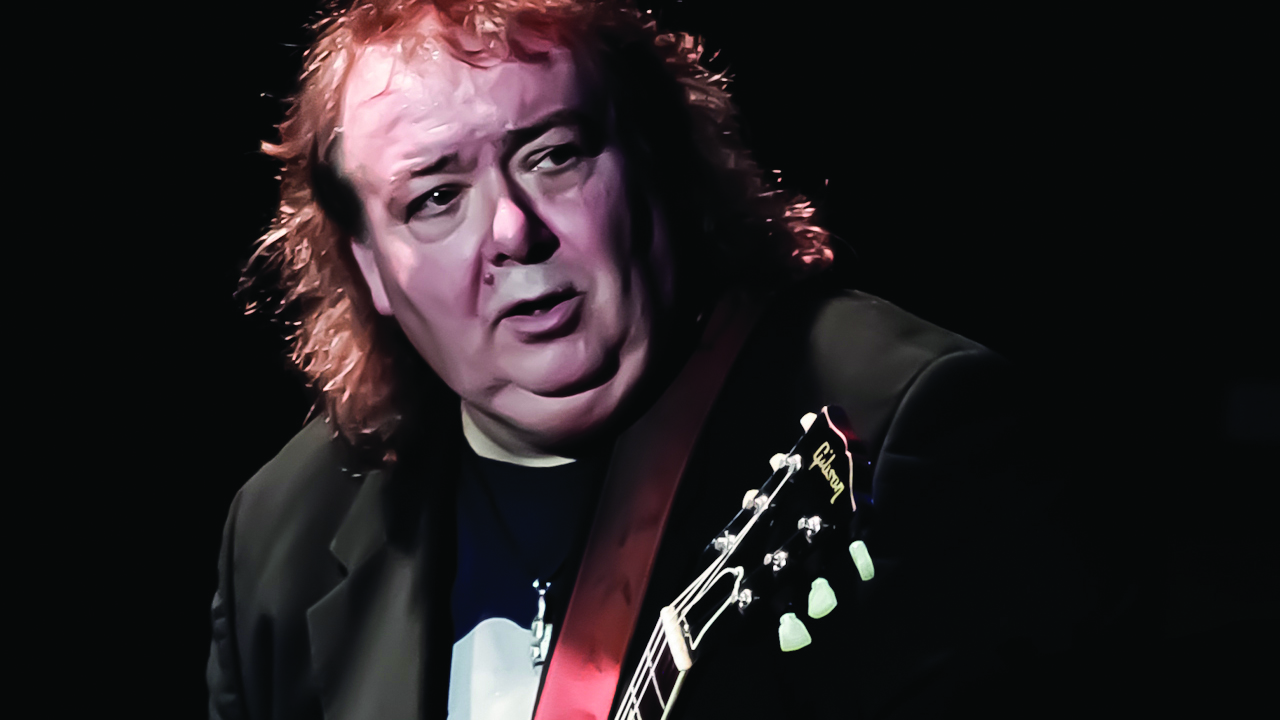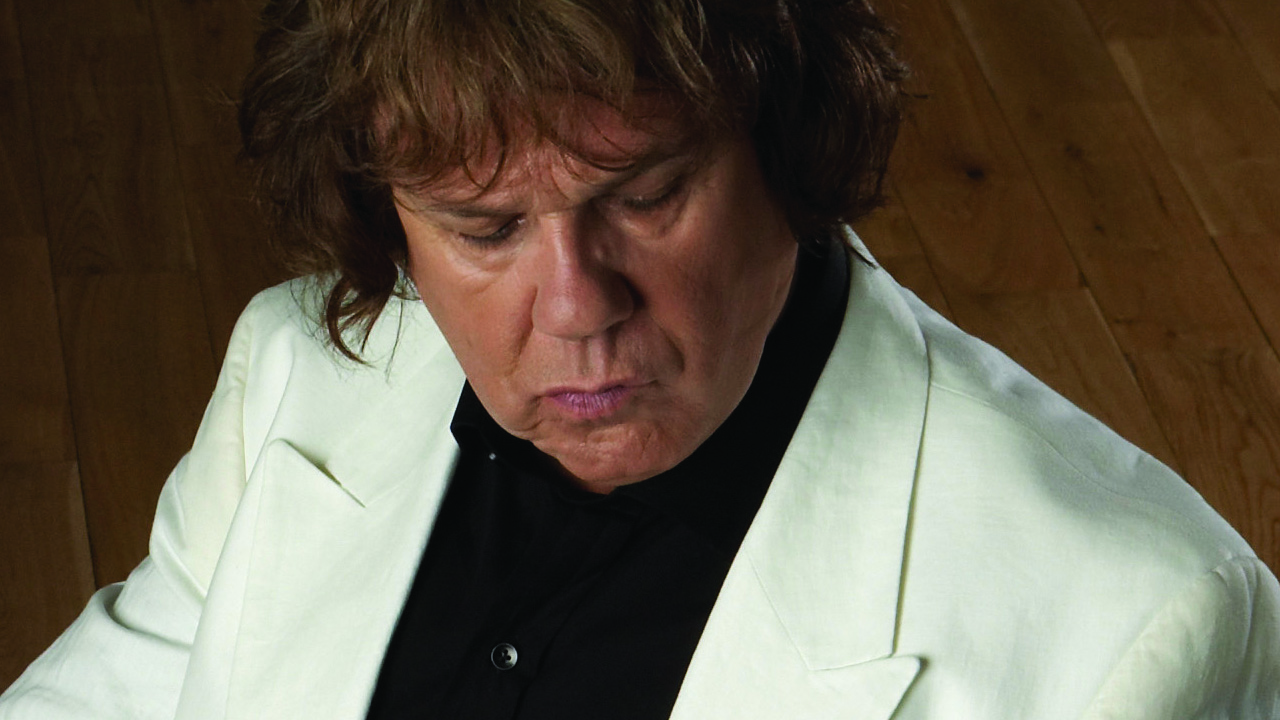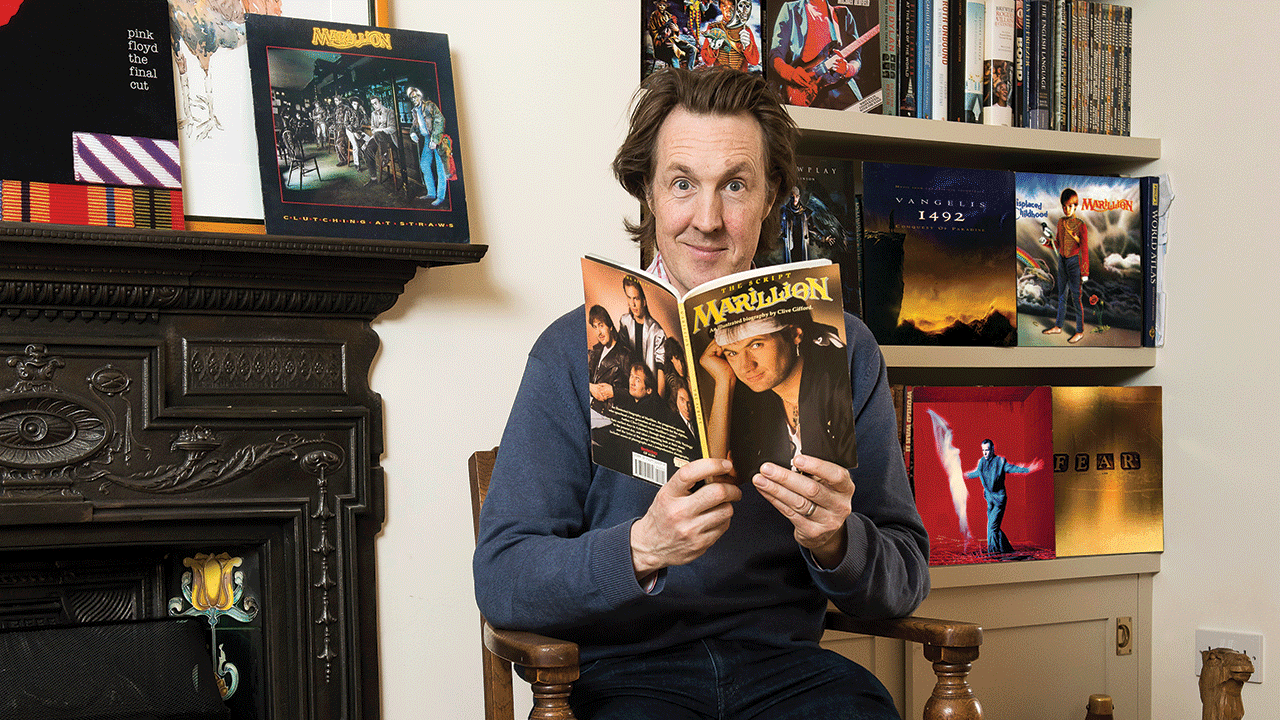Bernie Marsden: Why I Love The Gibson Les Paul
Guitar aficionado and former Whitesnake axeman Bernie Marsden schools The Blues on the impact of the Les Paul Standard.

The original Gibson Les Paul Standard is now one of the most sought-after guitars in the world, but it wasn’t an instrument that leapt fully formed into being to be embraced by a waiting public. Its roots lie in the Goldtop, introduced in 1952, made of mahogany and maple with a trapeze tailpiece and two single-coil P-90 pickups, with a body finished in gold. Two years later the first Customs appeared, made entirely of mahogany and known as Black Beauties due to their noir finish, but the quantum leap came with the arrival of the Standard, fitted with two humbucking pickups designed by Seth Lover in an attempt to eliminate the latent electrical hum problems of single-coil pickups. The tailpiece was replaced by a bridge/stop bar and the maple bodies were given a Cherry Sunburst finish, inaugurating the first generation of the ’Burst. Yet the original run of the Standard lasted three short years – 1958 to 1960 – as when it was first released in the US, the guitar was not a hit. But when the Standard found its way into the hands of the young hotshots of the British blues explosion, led by the likes of Eric Clapton, Peter Green, Mick Taylor and Paul Kossoff, they knew just what to do with it – plug it into a Marshall and crank it up. The Standard found its spiritual home in British bands, whether they were blues purists like John Mayall and the Bluesbreakers, or the rockers who emerged in the 1970s, such as Whitesnake, featuring the twin talents of Micky Moody and Bernie Marsden, the latter armed with his ’59 Les Paul Standard known as The Beast. That guitar was at Marsden’s side from his time in UFO, Cozy Powell’s Hammer and Wild Turkey, through Babe Ruth, Paice Ashton Lord, and then into Whitesnake where it was used to co-write classics including Fool For Your Loving and Here I Go Again.
I don’t think that many people realised the importance of Les Paul as a musician and an innovator.
“The first time I saw one was probably with Peter Green; that might have been the first one I saw being played on stage when I saw Fleetwood Mac,” says Marsden about his introduction to the Les Paul Standard. “The first one I ever picked up was when I was in a band called UFO. There was a guy playing with us at a gig in Bradford University. It was an electric guitar player and an acoustic guitar player, an odd line-up really, but he had a Les Paul. He’d left it in the dressing room with the case open. I picked it up and was playing it, thinking, ‘Oh this is fantastic, this is just like Peter Green’s and just like Eric Clapton’s.’ I played it for about five minutes in suspended animation and then the guy walked in and went, ‘Excuse me, that’s my guitar.’ I went ‘Yeah, it’s great.’ He went, ‘Thanks mate, I’d forgotten where I’d left it, so thanks for taking care of it.’ I should have said, ‘Do you want 70 quid for it?’ In 1973 I would probably have got it for something like that, but he didn’t have any idea of the type of guitar that he owned at the time. I said, ‘This is the same as Michael Bloomfield used,’ and stuff like that. He went, ‘Oh really? It’s just a guitar to me.’ I wonder where that one is now.
“I don’t think that many people realised the importance of Les Paul as a musician and an innovator. I certainly didn’t. I just knew that it was called a Gibson Les Paul Standard. This whole ’Burst thing, that’s fairly recent. It was a guitar that had been available and then no longer was. Of course, they reissued them in the 60s anyway, but I wasn’t aware of that either. After that I knew that I had to have one, so I got one quite shortly after this time in Bradford.
“They were expensive. We were probably earning £60, £75 a month and there was a guitar that cost £300, £400 – it was a lot of money. I did find one though. It wasn’t a great version, it wasn’t in particularly good shape, but I managed to get one and the sound was good so I used it for the first nine months of my professional career. I already had an SG/Les Paul. Gibson stopped making the regular Les Pauls and they came up with the SGs in 1962. I went to get a guitar and the guy said, ‘Oh no, we haven’t got one of those any more. We do have a Les Paul.’ He turned up with this SG and I was a little bit disappointed at first. But on the top of the headstock it said Les Paul, so I said, ‘I’ll have one of those then.’ That was my spare guitar at the time.”
Marsden’s first Standard came through an ad in Melody Maker music paper. “If you got one through that, you saved yourself 20, 30 per cent from being in a shop,” he says. “It was a bit messed around with and it had seen better days but it did the job. I was well pleased to have one. The first Sunburst I had was a converted Goldtop, because it had a wraparound tailpiece. It was an early 50s that had been sprayed again. It looked really old. It was a curious one because a friend of mine who was a guitar collector took some pretty good photographs of it and it had a bound headstock as well as a bound neck, so that was bit unusual. It could have been custom-built for somebody. It sounded great, it had humbucking pickups put on it so it looked like a Standard until somebody pointed out it hasn’t got a bridge. I went, ‘Yes it has, it has a bridge and a tailpiece,’ and they pointed out it must have been a Goldtop at some point. I said, ‘That’s okay, Freddie King used a Goldtop.’”

While American guitar prodigy Michael Bloomfield played a Les Paul Standard, the album that definitely transformed the sound of blues guitar more than any other was John Mayall’s 1966 release Blues Breakers With Eric Clapton, more affectionately known as the Beano album. “Eric Clapton got the Les Paul because he had a Freddie King album,” says Marsden. “I believe John Mayall had given him a copy of the album with Freddie King playing a Les Paul on the front cover. Eric, like the rest of us, loved what Freddie King did. The legend is that he went to a store and picked up a Les Paul, which happened to be a Standard, whereas of course Freddie King was playing a Goldtop. But for history that’s what happened, he picked that one up, he plugged it in to that old Marshall and the rest of us are still trying to catch up.
Sign up below to get the latest from Classic Rock, plus exclusive special offers, direct to your inbox!
When Eric Clapton plugged that guitar in, it changed the world
“The playing was astonishing. He was barely 21, but the sound that they managed to record! Eric has to get the credit for that because the engineer at the time said, ‘This is far too loud, we can’t possibly record this because it’s distorting.’ But that was exactly what Eric wanted. He said, ‘No, that’s what I do, that’s what you’re going to have to record. You’re going to have to get a way around it.’
“Technically, the humbucking pickup made a big difference. That was the crucial point, when they slapped those new pickups on the Goldtops in ’57, that must have changed the whole ball game five, maybe 10 years later. When Eric plugged that guitar in, that changed the guitar world. If you listen back to the Freddie King stuff, Eric doesn’t sound like Freddie King at all, he sounds like Eric Clapton. That’s because he wound that guitar up with that little 30-watt amp and Freddie wasn’t doing that. He was probably playing through a Fender Twin or something with that Goldtop. The difference was remarkable.
“Maybe John Mayall should have gotten a little tiny royalty from Gibson for all the guitars over the years, because the guitar was discontinued. It definitely was because of people like Eric Clapton, Michael Bloomfield, Jimmy [Page] that they reintroduced the guitar. Of course the reissues were happening before the first Led Zeppelin album. Jimmy had a Les Paul round about the same time as Jeff Beck. Jeff Beck on the Truth and Beck-Ola albums, that is classic Les Paul and a Marshall. I saw that group when I was 17, and I can almost still hear the sound coming out of the amplifier that night. I was only about seven feet away from it. I’d been in a band opening up for them and that was quite an eye-opener. Even then Jeff Beck was using a Les Paul. He’s been a Strat man for such a long time now that a lot of people aren’t even aware of that.
“Peter Green had a unique slant on it. He told me himself that he got a Les Paul because Eric Clapton had a Les Paul. He just wanted to have the same guitar so he went out and got one, but his guitar happened to have the pickups wired out of phase, so that gave Peter that lovely sound. When he had the toggle switch in the middle, one pickup was fighting against the other, giving it that hollow ring which he put lots of reverb on and made that lovely sound for many, many years.
“The big differences between all of the three years of the Standard guitars were the neck sizes. The 60s, most of them I’ve ever played, especially the later ones towards the end of the run, have very slim necks. I’ve got a ’60 and a ’59 and the neck compared to the ’60, it’s no comparison. They’re both equally great to play. A lot of people say, ‘I couldn’t play that because the neck is too big or the neck is too thin.’ I’ve never been one of those players. If you can pick a guitar up and it’s good, you can get around it. It’s like saying the driving wheel is too big in a car or something. Get used to it.”

Marsden’s ’59 Les Paul is better known as The Beast, and it’s a guitar with an illustrious history. Marsden bought the guitar from Mark Henderson who had bought it from Andy Fraser, from the band Free. Fraser, in turn, had bought the guitar from Paul Kossoff, who had bought it from Eric Clapton. There has been some speculation that The Beast might be the guitar that changed the world on the Beano album, but Marsden himself doesn’t believe so. Regardless, he first played The Beast at a gig with Wild Turkey, thanks to Henderson’s cunning sales technique. “I met him, I think it was in Guitar Village in Shaftesbury Avenue. He was talking to me about Les Pauls. He said, ‘I have a Les Paul you might like. I’ll bring it to a show for you.’ I didn’t see him for a couple of weeks and then he came to The Marquee, and for some reason or other he’d managed to get backstage, which wasn’t very easy at The Marquee. Between the last song and the Wild Turkey encore, he passed me the guitar and said, ‘Why don’t you use this? It’s in tune,
I’ve just been playing along with your last song, try it out.’ I did, and of course that was a brilliant way of selling a guitar because I plugged it in and the other guitar player’s mouth dropped open. He thought I’d turned the amp up by about six numbers. I said, ‘What do you want for it?’ He told me what he wanted, I said, ‘That’s out of the question, I just don’t have that kind of money.’ But we subsequently found out he was a bit of a Les Paul collector, but he collected them for people he thought should be using them. I was lucky enough to be one of the people he thought should really be using them. He said, ‘I’ve heard you play with your other guitar, sounded great, but this is the real thing. This is what you actually need.’ Once I played it there was no way I was going to give it back to him. We came up with a deal. He was very understanding, because I didn’t have the money to pay him in one go, so he said, ‘We’ll sort something out.’ I swapped him a couple of guitars for it. At the time two guitars for one seemed a bit crazy, but I think I did okay with it. It’s been ever-present ever since. I realise now it was still pretty Cherry when I got it, but it ain’t very Cherry now unless you take off the toggle switch cover; you can see it’s still very red under there. Joe Bonamassa plays it more these days than I do. Warren Haynes played it only about three weeks ago. He just went, ‘Yep, now I know why they all talk about it.’ It’s just incredibly rich. The pickups are just spot on. ‘This thing is crazy,’ that’s what Joe says. He just loves playing it. It’s a bit special. I think [Whitesnake album] Ready An’ Willing is a really good indication of what it does. Martin Birch produced that, and of course he produced all the Fleetwood Mac stuff, so he’d seen what a Les Paul does a few times.
“I’ve had a few offers over the years for some guitars that I’ve got, but I kept them because I knew they were going into somebody’s vault and they would never be heard again. If I was to sell The Beast for top dollar to some guy who is never going to play it, then no one is ever going to hear it again. To me, that doesn’t seem quite right. I don’t play it that often. I probably play it more often than I think but it’s not kept with the other ones, just in case. I do tend to be a bit flippant with it when I take it out on the road. When I went to play with Whitesnake before Christmas, I took my daughter with me and I saw Joe Elliott backstage. I hadn’t seen Joe in a few years. ‘Come and have a drink,’ he said, so I went to his dressing room. Five minutes later my daughter showed up with The Beast in her hand going, ‘Er, hello? You left this in the corridor?’ She was not impressed. When Joe B has got it, or his tech Michael, I always feel it’s safer with him. When professional guitar techs are around these days, to be honest, they are the only guys who will take responsibility for it. They’re used to handling Joe’s guitars or Warren’s guitars, it’s just another guitar to them. But when they hear it, they always say, ‘Oh my God, that thing is unbelievable.’
If we’d all known about collectable guitars in 2016, we’d all have 500 guitars apiece.
“Mick Ralphs was a big collector and mover-on of guitars. I got Micky Moody’s ’58 Standard for him via Mick. That was a beautiful guitar. You’ve got a guitar that is ex-Bad Company, ex-Whitesnake, so these things build their own lives in a way. I saw a guitar only recently, [owned by] a very fine guitar player called Mick Grabham who used to be in Procol Harum. He had a Les Paul which he had sold 30 years ago, and he came to my house and we did an article with the guy who had acquired it. Mick hadn’t seen the guitar for all that time and he was in my house when he first saw it. That was a lovely moment because it was like, ‘Hello, old friend.’ The downside of it was that it reminded him of how much he had sold it for! But he said at the time it was good money, so what do you do? He said, ‘You’ve hung on to yours.’ I said ‘Yeah, but only because I played it all the time.’ He said, ‘That was why I sold mine, I wasn’t playing it that much at the time and I thought the money would come in useful.’ I imagine that’s pretty normal, isn’t it? If we’d all known about collectable guitars in 2016, we’d all have 500 guitars apiece.
“I would say that Gibson Les Pauls from ’58 to ’60 are Stradivariuses of electric guitars. The original run is between 1,400 and 1,600, which isn’t very many over a three-year period. I don’t know how many Stradivariuses there are, but
I bet there are not that many. That was one man making them, which makes it slightly different. I was in the Gibson factory in Kalamazoo [Michigan] when I was in Whitesnake and there were people still working there then who had worked there in the 50s, and they said only two or three people worked on those guitars. There was the body work guy, the electrics guy and the finish guy. And then the person that set them up. The rest of the departments would just ferry over the components. So I would say I think they are worth what people want to pay for them, and obviously people will try to get as much money as possible for them. A friend of mine called me only this weekend, his friend had just bought a ’58 in New York, so they are out there. But you have to put your hand fairly deep in your pocket. I asked the guy, ‘What did he pay for that?’ He said, ‘I don’t know, but it was a private sale, he didn’t get it from a shop.’ So he probably saved himself a few bucks. It was a really nice one, a very good looking ’58. It was the real deal. He said the guy now has a ’58, a ’59 and a ’60 so he’s got the Holy Grail really. I hope he’s playing them.
“I used to share a house with Mick Ralphs when he was in Mott The Hoople, and Mick would come back from their American tours saying, ‘Oh, I bought another five guitars.’ ‘What? Five guitars?’ ‘Yeah, they were all $50, $60.’ One might have cost him $100. Mick was playing in America a long time before I went out there. The bubble had burst on the pawn shop thing a long time before I went out there. I worked with the late Glenn Cornick in Wild Turkey. He’d been in Jethro Tull, and I know that he and Martin Barre would go looking for pawn shop guitars. Glenn was one of the first people to tip me off to say investing in guitars isn’t that bad a thing. I remember he had three Firebirds at the time which he had a paid a total of something like $150 for. I used to use one of those in Wild Turkey and I ended up buying one of them from him. I don’t think people in America were picking them up at the rate that people in Britain were. Of course, when people went over there they’d see the Standards hanging up in a regular store, let alone a pawn shop, and say well, that’s $300. That computes back to under a couple of hundred quid, we’ll buy that and take it home. So I think that’s why so many ended up back here. I remember trying to find a wholly original one and they were just out of my price range. They were all £300, £400. I remember seeing Spencer Davis’ guitar hanging up in a store in London, that was £285. That sounds ridiculous now, but it was unaffordable at the time.”
After starting his writing career covering the unforgiving world of MMA, David moved into music journalism at Rhythm magazine, interviewing legends of the drum kit including Ginger Baker and Neil Peart. A regular contributor to Prog, he’s written for Metal Hammer, The Blues, Country Music Magazine and more. The author of Chasing Dragons: An Introduction To The Martial Arts Film, David shares his thoughts on kung fu movies in essays and videos for 88 Films, Arrow Films, and Eureka Entertainment. He firmly believes Steely Dan’s Reelin’ In The Years is the tuniest tune ever tuned.

